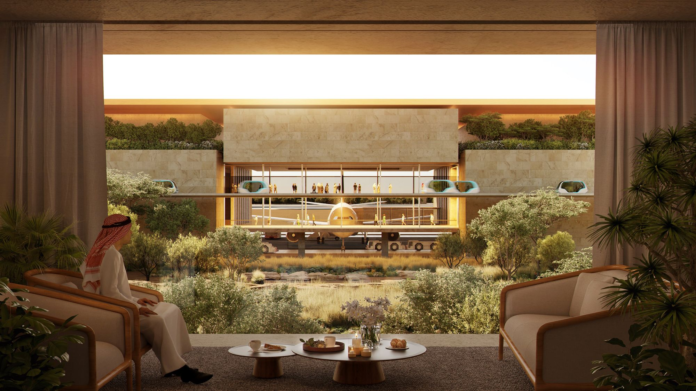Last November, Saudi Arabia revealed a plan for a six-runway mega airport in Riyadh. King Salman International Airport will represent a new age for Saudi aviation. With nearly six months on from the revelation, here’s a look at what to expect with the project.
The bigger picture
The new airport is just part of the puzzle involving a new generation of infrastructure across Saudi Arabia. Along with revamping Riyadh’s transport scene, a new megacity is being planned separately in the Tabuk Province in the northwest of the nation, backed by a new carrier in the form of Neom Airlines.
Riyadh will also be getting its own new airline amid Riyadh Air formally being announced last month after months of speculation. Overall, these initiatives are part of Saudi’s Vision 2030 Investment plan of diversifying its economy away from oil.
King Salman International Airport will be a hub for Riyadh Air, along with existing flag carrier Saudia. The site will have six parallel runways and provide the capacity for 120 million passengers by 2030. This figure is planned to grow to 185 million by 2050 while serving 3.5 million tons of cargo.
Covering an area of 57 sq. km (22 sq. mi), the ground will also include 12 sq. km (4.6 sq. mi) of retail, logistics, support, residential and recreational facilities. Altogether, Saudi authorities are keen to provide a ‘seamless customer journey’ with ‘sustainability at its core’ amid the incorporation of green innovation backed by renewable energy.
Get the latest aviation news straight to your inbox: Sign up for our newsletters today.
British architecture practice Foster + Partners is partnering with Saudi Arabia to help design the mega airport. The firm highlighted that the airport reimagines the traditional terminal as a single concourse loop, served by multiple entrances.” It added that the terminal connects passengers to the sensory experiences of the city with “natural elements, tempered light, and state-of-the-art facilities.”
Seif A. Bahaa Eldin, Senior Partner, Foster + Partners, concluded:
“This visionary development will play an important role in shaping the city into a global hub of creativity and innovation.”
Foster + Partners is also behind the Red Sea International Airport program. This international airport is set to open by the end of this year and serve a million passengers by 2030. The Red Sea Project seeks to bring luxury yet sustainable tourism to the region.
Broad ambitions
Earlier this month, Saudi Crown Prince Mohammad bin Salman bin Abdulaziz launched four new special economic zones in Riyadh, Jazan, Ras al-Khair, and King Abdullah Economic City. He said that these designations will odder new opportunities to develop the local economy, create jobs and localize supply chains.
Photo: Foster + Partners
The Riyadh zone will complement the recent launch of an integrated logistics special zone in the airport area. Notably, the new King Salman International Airport is being proposed to be built over King Khalid International Airport (RUH).
A new model?
The construction of the new airport is expected to take a decade to complete, and the initial phase is set to open in 2027. While there is plenty of time for air routes to be finalized, we can expect at least 39 Boeing 787-9 Dreamliners that Riyadh Air has on order to be spotted at the airport after operations are fully underway.
Saudi Arabia’s neighbors Qatar and the UAE have long dominated the international transit scene, with Qatar Airways, Etihad, and Emirates using their hubs to connect passengers across the continents. With Riyadh Air’s host of widebodies being based at an airport with six runways, Saudi could grab a significant slice of the transit pie.
Photo: Foster + Partners
Overall, there are high hopes for this next chapter of Saudi aviation. According to FlightGlobal, Neom Airlines anticipates the adoption of next-generation electric propulsion aircraft. It also wants to provide a smooth passenger journey with biometrics and digitization minimizing immigration, baggage, and boarding processes. This will be supported by door-to-door luggage services.
Thus, we can expect similar innovations for King Salman International Airport. It will be a revolution for Saudi air travel.
Airport Innovation Conference coming to KSA
With all the work going on in airports in KSA, the country is hosting a new conference for 2023 which will discuss the massive expansion plans and bring together top suppliers and solutions providers to cater to airport projects.
The Airport Innovation Conference will take place on 4th September 2023 at the Radisson Hotel in Riyadh, Saudi Arabia by Cogent Solutions Event Management. This day-long summit will provide a platform for over 25 key industry speakers, decision-makers, and influencers to share their expertise through interactive Keynote Speeches, Panel Discussions and Case Studies. More than 200 Attendees are expected to attend this event from the primary industry, i.e. Civil Aviation Authorities, Ministry of Tourism, Airport Operators, Airport Planners, Air Traffic Control Teams, Airport Planners, Airport Infrastructure Management Companies, and others.
Thought-provoking discussions will focus on the role of the aviation sector in achieving Saudi Arabia’s Vision 2030. The summit is all set to highlight technological innovations for security & immigration, reshaping passenger experiences, balancing safety & sustainability, and driving investment decisions. The conference will bring together more than 200 experts from across three continents to discuss the future prospects of the upcoming domestic airports in Saudi Arabia.
The Airport Innovation Conference in Riyadh is a significant step towards achieving Saudi Arabia’s goal of increasing tourism and reducing dependence on an oil economy. The tourism and commerce sectors are the key economic drivers for the GCC countries, and the UAE government’s recent announcement of exponential growth in the tourism sector serves as a motivation for Saudi Arabia to expand its airport infrastructure.
What are your thoughts about Saudi Arabia’s plans for King Salman International Airport? What do you make of the country’s broader aviation initiatives? Let us know what you think in the comment section.
Sources: ZAWYA; FlightGlobal




